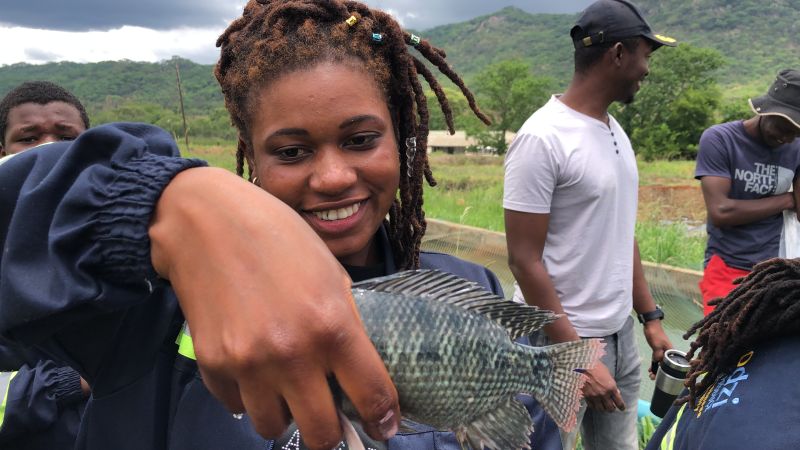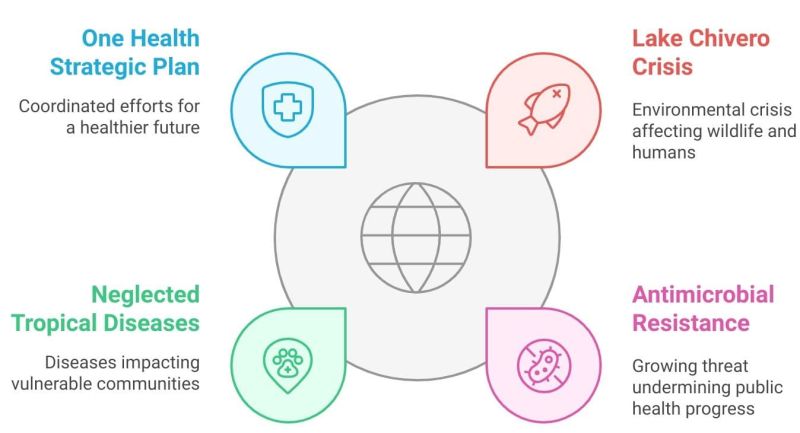
John Cassim
Experts have revealed that Zimbabwean fish produced through aquaculture could be a safer source of protein, as no fish-to-human disease transmission has been recorded. This positive finding comes amid global concerns about the alarming rise of zoonotic diseases, contributing to Neglected Tropical Diseases and Antimicrobial Resistance (AMR) in humans.
While wild fish can carry parasites potentially transmissible to humans—particularly trematode and nematode worms if the fish is eaten raw or undercooked—the Zimbabwean aquaculture sector has largely avoided the improper use of antibiotics like Oxytetracycline, Aquaflor, and Romet 30, which are used to treat various fish diseases in other countries.
“Zoonotic diseases spread from animals to humans, but Zimbabwe currently has no documented cases of disease transmission between fish and humans. Infections typically occur through consuming undercooked meat or through wounds and abrasions,” said Mr. Milton Makumbe, Director of Fisheries and Aquaculture Resources Production Department.
“Although several disease-causing pathogens have been identified in both humans and fish, no conclusive link has been established between the two,” he added.
“However, Zimbabwe cannot afford to be complacent. Further investigations are necessary to establish a definitive understanding. Therefore, while the statement about the lack of fish-to-human disease transmission in Zimbabwe currently holds true, the risk remains,” he concluded.
Research Findings
Research has shown that wild fish parasites, such as trematodes, are transmitted through aquatic snails to fish, livestock (causing liver flukes), birds, and humans (e.g., schistosomes/bilharzia).
Some fish flukes, like clinostomes and heterophyidae, can potentially transmit to humans, causing laryngitis (inflamed voice box). This is more common in Asia, where raw or undercooked farmed carp is often consumed as homemade sushi.
“In Africa, this risk cannot be discounted, as many fishing communities in remote areas like the Kariba/Zambezi Valley, Binga, and the Chiredzi (Save River valley) lack access to quality healthcare and have limited clinical records of potential snail-borne and fish-borne zoonoses,” explained Professor Maxwell Barson, a fish parasitologist who worked at the University of Zimbabwe for 15 years before joining the University of Botswana in 2020.
Professor Barson highlighted the risk in Lake Kariba, where heterophyid cysts have been found in kapenta gills. These fish are often preserved by salting and drying, and many people consume them without cooking, potentially transmitting trematode parasites.
“This illustrates the One Health concept, where pressures on the aquatic environment lead to the proliferation of invasive snails, introducing new parasites to native animals, which can then potentially infect humans,” Professor Barson added.

Graphics by Panashe Nyengera
He also cited a previous study at Lake Chivero, where trematode cysts and nematode parasites were found in tilapia and catfish. “These parasites can survive various food preservation methods, including cold smoking, drying, and even freezing at zero degrees Celsius for nematodes. Given electricity challenges in these regions, many people consume preserved fish, risking infection,” he said.
The initial fish parasitism is often exacerbated by unhealthy environments, such as sewage-contaminated water, where parasite eggs can easily enter the fish. Similar risks exist in Zambia and Malawi, where many people rely on home-grown tilapia and catfish raised in potentially unsanitary conditions.
Migratory birds also contribute to parasite transmission. Studies by the late Professor Ilan Paperna have shown that cormorants and pelicans migrate from the Middle East to Southern Africa each winter, resulting in similar fish parasite communities in both regions.
Professor Maxwell emphasized the importance of biosecurity measures in fish farms, including regular examinations by veterinarians or aquatic animal health experts. He also noted that cage aquaculture, growing in large water bodies like Lakes Kariba, Victoria, and Malawi, is susceptible to disease transmission from wild species.
Biosecurity Measures
The SADC region is currently implementing the Regional Aquatic Animal Health Strategy (2016-2026) to improve biosecurity and reduce disease transmission in aquaculture, transboundary water bodies, and wild fisheries. While most countries, including Zimbabwe, are incorporating this strategy into their national policies, significant gaps remain, primarily due to limited human, diagnostic, and financial resources.
However, Mr. Makumbe expressed confidence in the Presidential Community Fisheries Scheme, which has produced and distributed over 19 million tilapia fingerlings nationwide in 2024. He assured the public that this program operates under strict biosecurity measures, minimising health concerns.
“Most of our water sources have remained largely clean. It is always important to ‘Manage the water and the fish will manage themselves,'” Mr. Makumbe stated. He also highlighted the disease surveillance system led by Veterinary Services and the strict veterinary regulations controlling live fish imports to prevent disease spread from other regions.
Following the deaths of four white rhinos, thousands of fish, and other wildlife at Lake Chivero due to contaminated water, fishing was banned to protect public health. Despite this ban and reports of some fishermen continuing to fish and sell to unsuspecting residents of Harare, no cases of fish-to-human infection have been reported.
